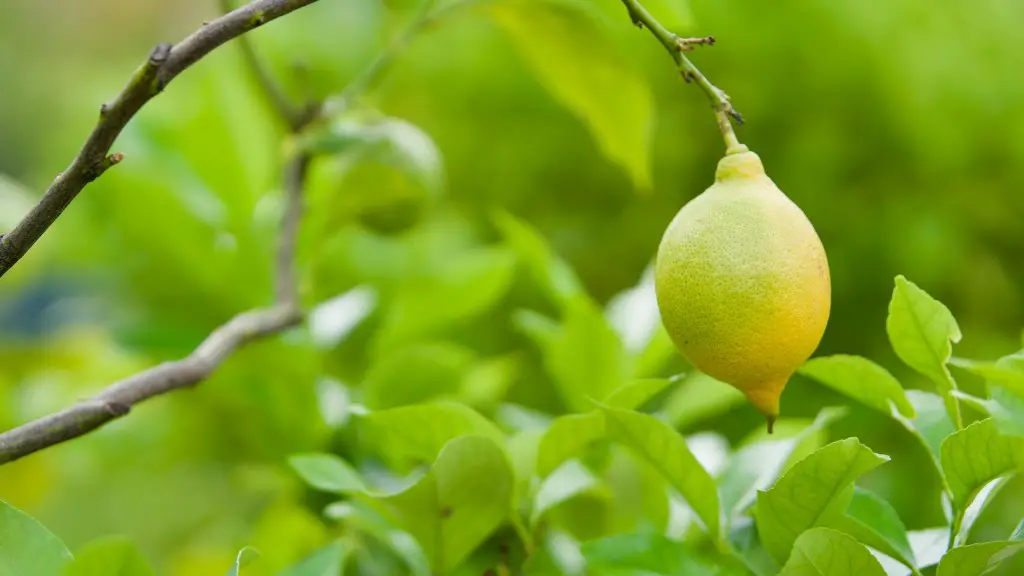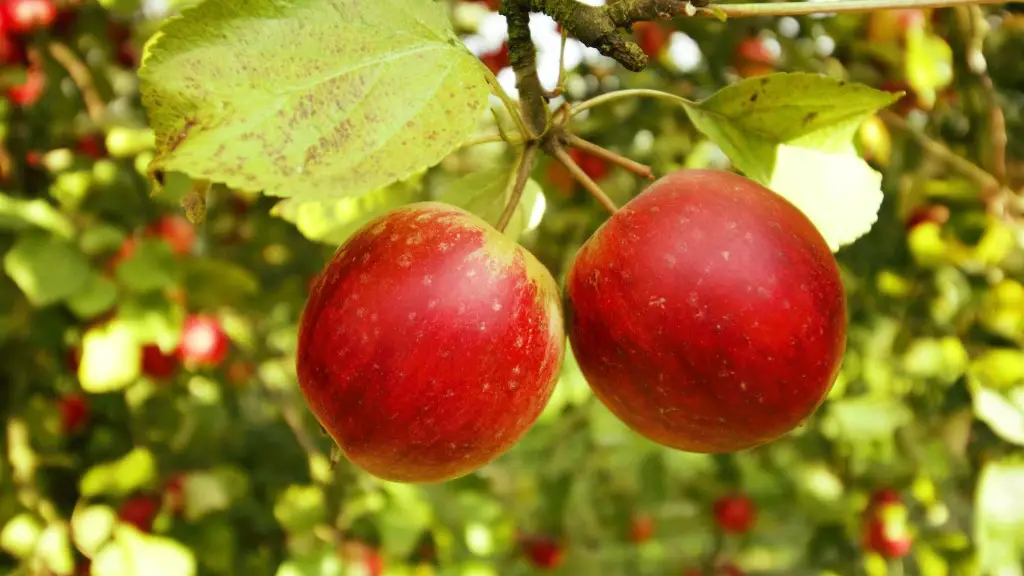Lemon trees are a common sight in many yards and gardens. These citrus trees are members of the Rutaceae family, which also includes orange, grapefruit, and lime trees. While all citrus trees are evergreen, lemon trees are generally smaller than their relatives. They typically grow to between 15 and 20 feet tall, although some variations can reach up to 30 feet.
Lemon trees produce fruit throughout the year, although the peak season is typically from April to June.
What time of year do lemon trees produce fruit?
Lemons are a fruit that we typically think of as having seasons, but in reality, lemon trees can begin to produce fruit anywhere from 4 months to one year after flowers bloom. This means that your lemon tree could potentially fruit in any season. However, most lemon trees will fruit during the winter season.
Meyer Lemon Trees are the ideal citrus plant to grow indoors because they are very easy to take care of. They also produce beautiful, fragrant blooms and fruit up to four times per year, making them a great addition to any home.
What month do lemon trees bloom
Meyer lemon trees are blooming machines! They can bloom all year, but they have two main blooming times: fall and early spring. If they bloom while it’s too cold for them to be outside, simply keep your tree indoors. During the blooming season, make sure to give your tree plenty of water and fertilizer to help it produce lots of lovely flowers.
Lemon trees need to be fertilized in the spring to encourage blooming and fruiting. Add phosphorus to the soil when you fertilize to promote strong fruit production. You should only prune your lemon tree when absolutely necessary, as fruits typically form on the ends of branches. Remove any dead wood or branches that are causing problems.
Why does my lemon tree flower but not fruit?
Most lemon trees need 1-3 years to grow into fully mature plants. So if your tree is only 1 year old, it likely won’t be able to bear fruit yet.
If you have an indoor lemon tree, you can help it produce more fruit by pollinating it yourself. All you need is a cotton swab or a small paintbrush. Gently dab the cotton swab or brush into the center of a lemon blossom, and then transfer the pollen to the center of another blossom. Repeat this process until all the blossoms on the tree have been pollinated.
In addition to pollinating your lemon tree, you also need to prune it on a regular basis. Pruning helps the tree produce more fruit by stimulating new growth. It also helps the tree stay healthy by removing diseased or damaged branches. To prune your lemon tree, start by removing any dead or dying branches. Then, cut back any branches that are growing too long or too close together.
Should I prune my lemon tree every year?
Lemon trees can be kept to a smaller size by pruning them lightly all year round. To do this, make your cut at an angle on a branch at the height you want, just above two healthy leaves.
Lemon trees benefit from the nitrogen and calcium in the coffee grounds. The organic material also improves the soil tilth. Only use the coffee grounds after they have been fully decomposed in the compost pile.
Should I prune my lemon tree
Citrus trees are able to fruit in areas with little to no sunlight, meaning that pruning the lemon tree to improve light availability is not necessary. However, young trees should have any sprouts removed and weak limbs pruned out.
The average lifespan of a citrus tree is 50 years. This means that the tree will continue to produce fruit for the entirety of its life. The tree will reach maturity and begin producing fruit between the ages of 2 and 5.
Do lemon trees want full sun?
Lemon trees are a great low-maintenance plant that can grow perfectly even within your house! As a citrus variety, lemon trees require full sun, which means about 6 to 8 hours of direct sunlight daily. For indoor growth, simply place them in front of a south-facing or sunny window.
Lemon trees and other plants with thorns often have delicious foliage and/or fruits. So, if you’re looking for a plant that is both beautiful and delicious, don’t discount one just because it has thorns.
Why hasn’t my lemon tree doesn’t produce fruit
There are several reasons why a citrus plant may fail to flower. Lack of light, lack of feeding, erratic watering, or low temperatures can all cause this problem. If a citrus plant is grown from pips it will often not fruit for a number of years as they have to go through a juvenile stage before flowering.
Lemon trees prefer a climate with temperature range being between 70-100 degrees. Once temperatures rise above 103 degrees, the lemon tree will stop growing, or photosynthesizing, causing it to go somewhat dormant. If the heat lasts for very long it can cause the tree to drop fruit.
Can you put Miracle Grow on a lemon tree?
This is an all-purpose fruit tree spray that can be used on all types of fruit trees, including citrus and palm trees. It is a safe and effective way to control pests and diseases, and to promote growth and fruit production.
The flowering and fruiting cycle of lemons is a long process that can take up to a year to complete. Flowers typically appear in spring, and the fruit develops over summer. The lemons slowly turn from green to yellow in fall or winter.
Do you pull flowers off lemon tree
It’s important to remove flowers from young citrus trees for a few years so they can focus on developing a strong root system and branch structure. This will help the tree be more productive and resilient in the long run.
Yes, the thorns on citrus trees have definitely evolved as a means of protection from predators – just as hedgehogs and porcupines have evolved to have prickly hides as protection from predators. This is a great example of how natural selection can result in different species developing similar characteristics in order to survive in their respective environments.
Final Words
Lemon trees produce fruit year-round, with peak production in the spring and summer.
Lemon trees produce fruit year-round, with peak production occurring in late spring and early summer.




